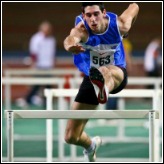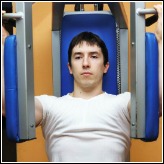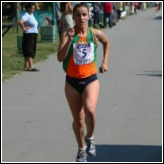Lifting Techniques - It's Easy To Make Mistakes

Athletes have to master a number of different lifting techniques into their training program. With so many exercises, each with its own technique or variation on a technical theme, it is easy to make mistakes.
The training regime incorporated into a modern day weightlifting program utilizes a number of lifts such as squatting, bench pressing and dead lifts. These training programs make use of a variety of training systems such as free weights, dumbbells and barbells exercises, and training on various stationary weight lifting machines.
Weightlifting offers many training options to the sport person. But these differing training objectives suggest that the workout is organized in a specific way to meet the training demand. Training will therefore be configured differently in the amount of sets performed, the number of repetition in each set and the training equipment used. And with these options and objectives come a number of different lifting techniques to be mastered by the athlete.
Here are some of the most common mistakes that beginners usually make:
Overtraining
A lot of athletes make the mistake of overtraining. By that I mean they train for long hours in the gym doing the same exercises over and over, day in, day out - week in, week out.
When you first begin to do weights you should always keep in mind that sometimes less is more. When your muscles grow, it does so because the training process cause micro tears in the tissue. The body then repairs the damage to a higher specification than that which it started with. This repair can only take place when you are at rest - not while you are training. The time taken for the repair depends on your diet and the rest period between training sessions, but usually after a hard weightlifting session, the muscle needs around 24 to 48 hours to recover from the workout.
Cheating
If you train with weights that are too heavy, and you are forced to sacrifice form and technique, you are cheating yourself. Good lifting techniques include lifting the correct weight in the correct way. It is important therefore that you know what the correct weight is for you. The easiest way of accomplishing this is to begin your training with a load that you know you can handle easily, from there you can gradually increase the load over time until the optimum load is reached for the require training objective.
Sometimes it is required that you train a particular muscle group to failure, but you do not need to sacrifice your form to accomplish this. Always follow the correct lifting techniques for the best training results.
Too Many Supplements
Food supplement should never replace a proper diet. If you are relying on supplements to get the nutrients for training you are probably doing yourself more harm than good. There is a reason why they are called supplements - they should just supplement your diet not replace it.
You need carbohydrates and fats for the energy to train, you need protein to repair and build healthy tissue, but if your basic diet is poor, it is going to be difficult and expensive for you to get the right nutrients to build strong muscles if you rely on supplements.
Neglecting the Right Nutrients
Fats and carbohydrates are an important part of all diets - even if your only intention is for weight loss. This is because carbohydrates are the main source of energy for our body. If we don’t have enough carbohydrates in our diet, our body will use other sources for energy for example protein. This can lead to problems in the long term especially when you need protein to build muscle tissue and instead of building muscle, the protein is being used to fuel the body.
Fats are essential as well, but you must make sure you get fats from healthy sources like nuts, fish and olive oil.
Training like a Professional Bodybuilder
The training program and the lifting techniques of professional bodybuilders are different from those used by other sport. Some athletes wrongly think that following the same routine as a bodybuilder would make them as strong. Different sports demand different exercises routines, some sports demand that the athlete has a large muscle mass while others demand strength in the absent of too much muscle bulk – different athlete and sports need different workout routines.
Just because someone is big and gets good results from one routine doesn’t mean you will get the same results from it as well. You will need to know what it is that you want from your training program and the best methods to employ to get the required results.
Sign Up For The Latest Track And Field News And Improve Your Athletic Performance!







